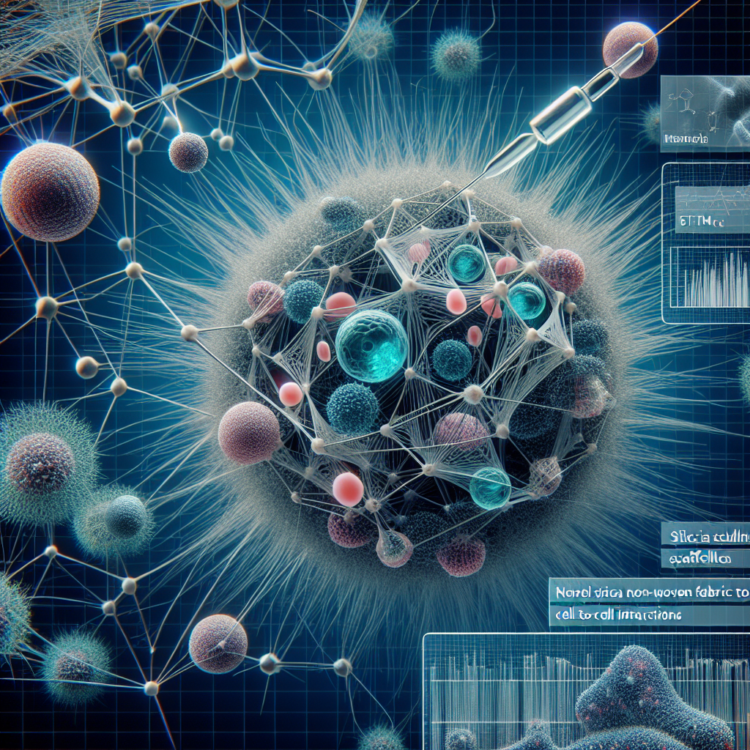Communication and coordination among different cells are fundamental aspects that regulate many functions in our body. This process, known as paracrine signaling, involves the release of signaling molecules by a cell into its extracellular matrix (ECM) or surroundings to communicate changes in its cellular processes or the local environment. These signaling molecules are then detected by neighboring cells, leading to various cellular responses.
For instance, during cell/tissue injury, it releases growth factors that signal nearby stem cells to assist in tissue repair in the form of scar tissue formation or blood clotting. Similar processes occur in the regulation of other vital functions, such as digestion, respiration, and reproduction. Additionally, paracrine signals influence the expression and activity of enzymes involved in drug metabolism and play a role in drug-drug interactions.
The signaling molecules, which may contain proteins and genetic material, are transported within tiny vesicles called exosomes. These vesicles serve as valuable biomarkers for various diseases and can even be engineered to carry drugs, making them a highly effective targeted drug delivery system. Notably, the hormone oxytocin and the neurotransmitter dopamine are paracrine messengers.
To investigate the impact of exosomes on cell–cell interactions, a team of researchers, including Professor Hidenori Otsuka and Dr. Shohei Ishikawa from Tokyo University of Science, has recently developed an innovative cell culture system. Their findings were published online in Volume 120, Issue 7 of the journal Biotechnology and Bioengineering on 19 May 2023.
The proposed system addresses several limitations associated with conventional co-culture systems, where different cell types are cultured in proximity. “When cells are cultured three-dimensionally on a scaffold such as a normal hydrogel, the scaffold on the membrane insert separating them contracts as the cells proliferate and functionally differentiate, inhibiting the permeation of cell-secreted factors such as proteins and exosomes and resulting in a decline in functionality,” explains Prof. Otsuka. Another challenge in these cultures is to distinguish between the specific roles of cell-to-cell contact via direct physical interactions and paracrine signaling.
To tackle these challenges, the research team designed a three-dimensional segregated co-culture model with a well plate—rectangular plate with many separated wells—consisting of two cell types separated by a membrane insert with silica nonwoven fabric (SNF), an interconnected network of highly porous electrospun fabric. In such a segregated system, cell-to-cell interactions via direct contact are eliminated. In addition, the high mechanical strength and interconnected porous network of SNF can facilitate cell growth without undergoing shrinkage or causing a decline in cell function. This allows interactions between different cell types to be maintained and studied over extended periods.
Using the proposed co-culture model, the researchers cultured primary hepatocytes from rats and normal human dermal fibroblasts in separate compartments but within the same culture environment. These two cell types are found within the liver tissue. Hepatocytes are responsible for various metabolic functions, while fibroblasts are a type of connective tissue cells involved in maintaining the ECM. Co-culturing these two cell types enabled the team to investigate the interactions between them as well as the role of the ECM in cell simulation.
The researchers observed a significant improvement in cellular functions when co-culturing cells on the SNF scaffold. The unique characteristics of SNF made it an ideal support material for studying cell–cell interactions via paracrine signaling. While the high porosity of the novel scaffold facilitated the infiltration of cells in a 3D culture environment, its high permeability enabled efficient exchange of signaling molecules (or soluble factors) among different kinds of cells.
“In light of our findings, the novel technology holds immense potential for novel applications such as drug screening, tissue engineering, and regenerative medicine,” concludes Prof. Otsuka.
In particular, regenerative medicine has become increasingly commercialized over time, thanks to the efforts of innovative companies like Avery Therapeutics (skin-cell-based treatment for chronic heart failure), Regenative Labs (Wharton’s jelly allografts to prevent joint degeneration), CollPlant Biotechnologies (virgin human collagen scaffolds), and Aivita Biomedical (stem cell purification technology for personalized vaccines against COVID-19), among others. In light of this, the novel SNF scaffold could turn out to be a game-changer for the healthcare industry.
***
Reference
DOI: 10.1002/bit.28425
About The Tokyo University of Science
Tokyo University of Science (TUS) is a well-known and respected university, and the largest science-specialized private research university in Japan, with four campuses in central Tokyo and its suburbs and in Hokkaido. Established in 1881, the university has continually contributed to Japan’s development in science through inculcating the love for science in researchers, technicians, and educators.
With a mission of “Creating science and technology for the harmonious development of nature, human beings, and society,” TUS has undertaken a wide range of research from basic to applied science. TUS has embraced a multidisciplinary approach to research and undertaken intensive study in some of today’s most vital fields. TUS is a meritocracy where the best in science is recognized and nurtured. It is the only private university in Japan that has produced a Nobel Prize winner and the only private university in Asia to produce Nobel Prize winners within the natural sciences field.
About Professor Hidenori Otsuka from Tokyo University of Science
Prof. Hidenori Otsuka completed his Ph.D. from the Department of Chemistry, Tokyo University of Science (TUS) Graduate School, and currently heads his own laboratory at TUS. With more than 100 research publications to his credit, his research focuses mainly on the basics and applications of physical chemistry, especially colloid and surface chemistry.
His full profile can be viewed here:
Funding information
This work was supported by the Japan Society for the Promotion of Science (JSPS) (Grant No. 20J01344), Grant-in-Aid for Young Scientists (Grant No. 21K18063), and for Scientific Research (Grant No. 16300165, 20300170, and 26288064) and the Japan Agency for Medical Research and Development (AMED) under Grant Number 22ym0126812j0001.




